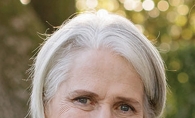
Thanks to new knees, the spring in Howard Young’s tennis game has returned. His days of holding court are far from over, even at age 88.
And he’s not alone. Tennis pros and amateur players alike laud it as a lifetime sport, perfect from childhood to the golden years. Young, a longtime tennis player, is proof of that, swinging away at Minnetonka’s Williston Fitness Center three times a week. “When my knees were giving me a terrible time, I wondered, ‘Why should it be so hard to give up tennis?’ ” says the Shorewood resident, who had his knees replaced two years ago. “I’m not that good. But there’s something so compelling about it.”
What exactly makes tennis so gripping? Those like Young, who play regularly, say the exercise is good for their body and the friendships made on and off the court are good for their soul. “It’s hard to assign the most value to either one, that unquantifiable association with other people that is positive and reinforcing, or the actual physical activity of running and chasing a ball,” Young says. “Both have certainly helped me.”
Barb Brown works from her Hopkins home a couple of days a week, allowing her to take a midday break to play tennis. She and her husband began hitting the ball around five years ago when their youngest child was nearing college. Her passion for the game soared from there. “I don’t like to work out, but this doesn’t feel like you’re working out,” she says. “The time just flies by.”
Christopher Lund, a junior at Minnetonka High School, was on the boys’ varsity tennis team last spring. He played baseball, too, but decided to stick with just tennis after his knees were “shot” from catching on the baseball team. “I find tennis to be so fun and competitive,” Lund says. “Even though we’re still a team and root for each other, you are really in control of what happens in the match.”
Joan Baker has two different perspectives on tennis: one from years of playing, and another as a current vice president of the United States Tennis Association (USTA) board of directors.
The USTA is the not-for-profit governing body of the sport, promoting and developing tennis across the nation. “To me, it’s never about the level that I’m at anymore,” says Baker, who lives in Shorewood. “It’s what I do to keep fit and healthy. And it’s about the people [with whom] you’re enjoying time together.”
Here’s maybe the most compelling proof: The Minnetonka Tennis Club on County Road 101 celebrates its 50th anniversary this fall, and “some of our members went to elementary school together in the 1940s and ’50s and are still playing together,” says tennis director Scott Swanson. Yep—that’s love.
Playing Opportunities
Tennis has always been in style in the Lake Minnetonka area. Programs, leagues and lessons for all ages and levels offered by clubs, community education and the USTA fill up fast. Swanson says, “One of the things contributing to the interest in tennis is the increased awareness of concussions with contact sports like football, hockey and lacrosse. I’ve seen a couple of examples of concussions in tennis, but it’s rare.”
The tennis ball bounces here all year long, thanks to member-based indoor facilities—Williston, Minnetonka, and Life Time Fitness clubs in the area. (Non-member-based leagues and lessons are open to the public at Williston and Minnetonka.) Clubs especially bustle in the winter when they are the only tennis game in town. In the summer, opportunities include playing outside in parks and at schools, or at private clubs with outdoor courts, like Lafayette and Woodhill.
“It’s tough to get on an indoor court everywhere in the winter,” says Felicia Raschiatore, tennis manager at Williston. “It’s a busy place. Even if you’re taking lessons, however, you can go outside and play for free from May to October.”
“Tennis can be a very affordable sport,” Baker adds. “It can be very expensive if you feel you have to be at a club and only be taught by professionals. We need the clubs and we need our professionals. It’s how you view it and what stage you’re at with your game.”
No matter what, there’s always room for more players. “We’ve found that our most successful players didn’t start playing at age 6 or 7,” says Mike Goldammer, executive director of the USTA Northern section, which promotes tennis in Minnesota, North Dakota, South Dakota and a slice of Wisconsin. “They come to the sport late, but because they have athletic ability, they’re able to pick up on that and run with it.”
Children and teens ages 5 to 18 are being courted by the USTA through its new youth brand, Net Generation (netgeneration.com). Baker hopes it will be the new pathway into tennis, putting more emphasis on learning through play and having fun, not just drills and competition. Net Generation is an extension of how the USTA teaches tennis to children and beginning players. For about 10 years, its youth progression system has scaled the game down by using different colored balls—red, orange and green—that don’t bounce as high as the traditional yellow ball, and smaller racquets and courts. “You have to let them have fun to get them and keep them interested,” Baker says. “If not, they’re not going to come back.”
Marci Weiner, girls’ tennis coach at Wayzata High School, tries to instill a “healthy balance” between competition and fun for her players. “We know if it’s not fun they don’t want to keep doing it,” she says. “It’s not all about the wins and losses. It’s working with your teammates.”
Dave Stearns, longtime boys’ and girls’ tennis coach at Minnetonka High School, says parents should give children lots of choices when it comes to activities, instead of laser-focusing on one thing. And the USTA encourages youth to participate in multiple sports. “As they see their kids grow up, parents—if they’re smart—will expose them to everything and find out what’s best for them,” Stearns says.
Baker says playing multiple sports is a good thing. Doing nothing is not. “Computers are the biggest competitor,” she says. “That’s the biggest threat we have in this country—the threat of just being sedentary.”
Indoor Courts
Stearns and Weiner say the level of play on their teams has steadily improved over the years. They attribute that to their athletes being able to play all year long by using indoor courts. High school girls’ tennis is played in the fall, boys’ tennis in the spring. “The junior programs of the indoor clubs have grown over the years, so the opportunity for them to play year-round has dramatically changed,” Stearns says. “Obviously, it’s costly, and you have to pay for it, and we’re still behind the southern states, because they can play year-round. But regarding numbers and opportunity, it’s much better.”
“The girls are playing so much more in the offseason,” Weiner adds. “It’s fun to see how much they improve when they put in the time.”
If anyone knows the benefits of playing year-round, it’s Raschiatore, who was a top-ranked junior while living in Michigan, and ranked No. 40 nationally. Her family moved to Florida when she was 15. By playing more, her ranking went from No. 40 to No. 5 in a year. “Court availability, practice competition and tournament competition will be the three variables that will ratchet up your play even if you don’t change anything else,” she says.
Swanson says children are playing more tennis, but not as much on their own as he did when he was their age. “If it’s not programmed, they find something else to do,” he says. “I think they should go out with their buddies and play for a couple of hours. It helps increase the love and the passion for the game.”
For the Love
Joan Baker helps promote tennis at the national level.
From the sidelines of her children’s tennis tournaments, Shorewood resident Joan Baker could see how hard volunteers worked to make everything run smoothly. “I thought when my kids went away to college, it would be my turn to give back and do that,” says Baker, whose three children (now adults) played tennis, two collegiately.
And she was true to her word.
Over the years, Baker rose through the volunteer ranks to her current role as a vice president of the United States Tennis Association (USTA) board of directors. It’s her first year of a two-year term. Before that, she was a member-at-large (currently in her fifth year), and also served on the USTA Northern section board for 12 years, including two years as president. She is the first member of the USTA Northern section—which markets and promotes tennis in Minnesota, North Dakota, South Dakota and part of Wisconsin—to serve on the national executive committee.
The USTA is the governing body for tennis in the nation, overseeing the U.S. Open Tennis Championships, the final Grand Slam major played each year.
Baker has met John McEnroe, Jimmy Connors, and many other famous players. Many people think that’s what her job is all about, she says. But it’s really about the business of tennis.
“I love being on the board,” she says. “It’s fascinating. The USTA is a big corporation, and it’s global. We get involved at the board level with decisions on the U.S. Open, pro players, prize money, broadcasts. That’s the kind of information coming to the board.”









